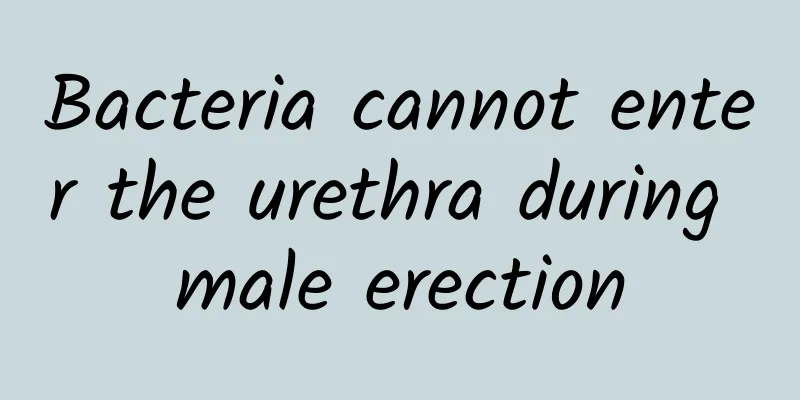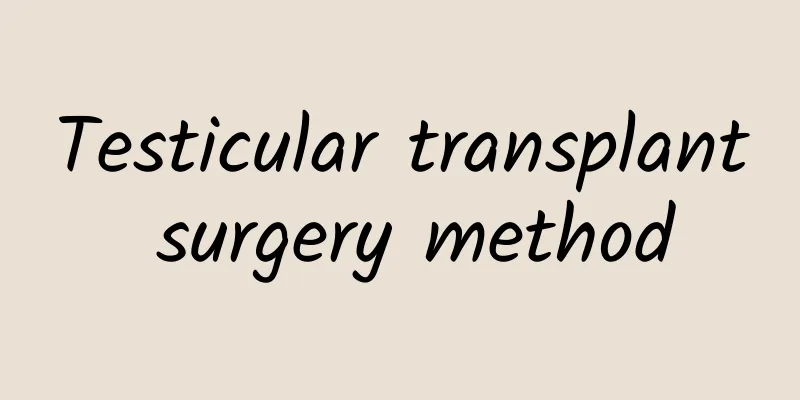Testicles in the inguinal groove

|
The male testicles are an essential part of the sexual reproductive system, and the main function of the testicles is to store semen. So when there is a problem with the testicles, it will affect a man's normal sexual ability. However, the growth position of each man's testicles has some deviations. A small number of men find that their testicles grow in the inguinal area. So what is the situation with testicles in the inguinal area? The testicle is an especially important reproductive organ for men. Normally, it can be touched by hand. However, due to some physical and endocrine reasons, the testicle shrinks to the inguinal groove and can no longer be touched by hand. This symptom is divided into four categories: cryptorchidism, inguinal testicle, mobile testicle, and lost testicle. During the treatment process, patients need to deal with it according to their actual situation. 1. Physical reasons: 1. The frenulum of the testis has the traction effect on the testicular muscle. 2. Intra-abdominal pressure pushes the testicles down into the scrotum. 3. Normal epididymal development is also a factor in testicular descent. 2. Endocrine reasons: 1. The secretory axis that affects the descent of the testicle, namely the hypothalamus-pituitary-testis axis, is abnormal, resulting in cryptorchidism. 2. Müllerian inhibitory substance (MIS) secreted by testicular support cells and male hormones testosterone and dihydrotestosterone also affect testicular descent. 3. Suffering from Kallmann syndrome, lack of hypothalamic gonadotropin-releasing hormone leads to cryptorchidism. 4. Patients with 5D-dehydrogenase deficiency cannot effectively convert testosterone into dihydrotestosterone, which is enough to affect the descent of the testicles and produce cryptorchidism. 3. Abnormal testicular descent is divided into four types: Statistics show that the proportion of full-term infants with undescended testicles is 2.7%, which drops to 0.77% when the infants reach full age. Generally speaking, premature infants have the highest rate of occult testis, up to about 20%. Some experts believe that this may be due to the fact that premature infants themselves are not fully developed. (I) Cryptorchidism: The testicles are located in the abdominal cavity or at the posterior side of the abdominal cavity and cannot be seen or felt. This condition accounts for 5-20% of abnormal testicular descent. (B) Inguinal testicles: The testicles are located in the inguinal groove. (III) Migrant testicles: The testicles wander outside the inguinal groove and scrotum. This type of positional abnormality means that the testicles are originally in the scrotum, but when stimulated, they shrink upwards and move to the inguinal groove. Or the testicles outside the inguinal groove can be squeezed down to the scrotum by hand. This is the most common testicular descent abnormality and is less likely to cause infertility problems. (IV) Lost testicles: The testicles have no idea where they are going and are not on their descending path. This accounts for about 5% of abnormal testicular descent. |
<<: Is it good for men to shave their pubic hair?
>>: The coronary sulcus hurts when touched
Recommend
Is the mortality rate from testicular cancer high?
When hearing about cancer, everyone will have a f...
Penile skin tingling
Penile skin stinging is a symptom that many men h...
Five things to note after prostate biopsy
For those patients who are suspected of prostate c...
What causes condyloma acuminatum?
After being infected with genital warts, some pat...
Private rash
The most common cause of private part rash is gen...
How to prevent male diseases
Men are not as strong as they seem. There are man...
How to improve low sperm survival rate
Normal sperm survival rate is above 70%. Vitamin ...
What is fatty liver disease and what causes it?
It is said that drinking alcohol is very harmful ...
What is itching inside the glans?
Men have itchy glans, which is very uncomfortable...
There are many benefits for men in the bar - eat more six kinds of meat to strengthen the yang and kidney
TCM Tips: Kidney is the source of a man's ess...
Sperm is like sticky yellow snot
Men's sperm is the key reproductive substance...
Chinese medicine for strengthening the kidney and improving yang
Maybe everyone is very particular about life, and...
How to make cola ginger soup, cola ginger soup cures colds
Coke is a carbonated drink. Many people think tha...
What are the treatments for chronic prostatitis?
Many people suffer from chronic prostatitis. Chro...
I still have edema two months after circumcision. What's going on?
It has been two months since the circumcision and...









